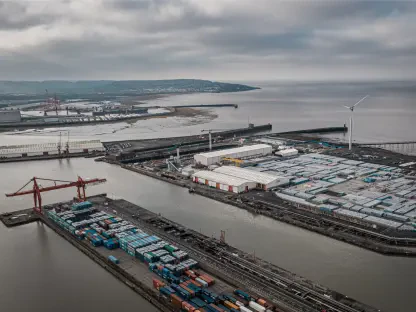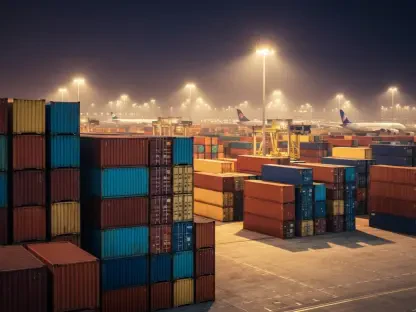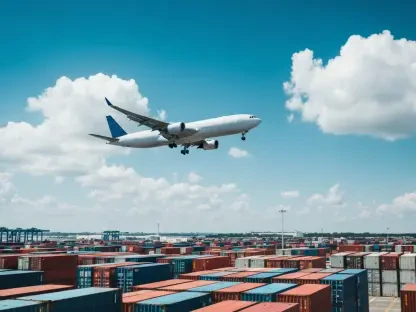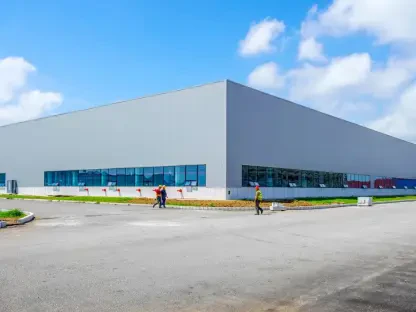As European road transport faces increasing economic challenges and stringent regulations, companies must adapt to survive in this evolving landscape. Rising inflation, fuel price increases, and regulatory changes have put substantial strain on the sector. According to a February 2025 market update by DSV, a detailed analysis of the current state of European road transport highlights significant concerns and potential strategies for adaptation. The report delves into various factors affecting the transport industry, particularly from late 2024 to early 2025, emphasizing the need for resilience and strategic planning in the face of mounting pressures.
Economic Challenges and Rising Operational Costs
A primary challenge identified in the DSV report is the rising inflation in the Euro area, which saw a significant increase to 2.5% in January 2025. This escalation has been largely driven by surging energy prices, exacerbating the financial strain on transport companies. GDP growth in the final quarter of 2024 stagnated, marking the weakest performance of the year with only a modest 0.4% expansion. These economic factors collectively contribute to an increasingly challenging environment for the transport sector, demanding that companies adapt their strategies to remain competitive.
Compounding the issue of inflation, a notable tightening of freight capacity was observed, as shown by a 5% year-over-year drop in the European road freight capacity index. This index fell from 97.2 in Q4 2024 to 95.4 in January 2025, indicating reduced availability of transport resources. Meanwhile, diesel prices have also spiked, jumping from €1,545.06 in late 2024 to €1,621.15 by January 2025. The combined effect of these economic pressures results in higher operational costs for transport companies, which must find ways to absorb or offset these additional expenses.
Fluctuations in Freight Rates and Industry Stability
Freight rates present a mixed picture for the industry, with different trends noted between contract and spot rates. While contract rates showed a quarter-over-quarter rise of 2.8 points, they decreased by 1.4 points compared to the previous year. Spot rates, on the other hand, experienced a 0.5-point increase in the last quarter but a 1.0-point drop year-over-year. These oscillations in freight rates highlight the volatility and uncertainty the sector must navigate, complicating financial planning and stability for transport companies.
The surge in bankruptcies among transport companies across Europe further underscores the sector’s instability. France observed a 37.8% increase in bankruptcies, while Belgium experienced a staggering 50% rise. Germany’s transport failure rate doubled relative to other businesses, and nearly 500 carriers in the UK shut down in 2023, with expectations of an additional 10% increase in 2024. These alarming statistics demonstrate the high stakes that transport companies face, emphasizing the need for robust and adaptive strategies to withstand these hardships.
Regulatory Changes and Industry Adaptation
New regulations are continuously reshaping the European road transport industry, presenting both challenges and opportunities for adaptation. One such regulation is the implementation of phase 5 of the New Computerized Transit System (NCTS) on January 21, 2025. This system aims to streamline cross-border logistics, yet it imposes additional data reporting requirements that necessitate investment in compliance solutions. Transport companies must adapt to these new procedures to maintain operational efficiency while managing increased costs associated with regulatory compliance.
Another significant regulatory shift is the EU Emissions Trading System (ETS), which now requires shipping companies to cover 70% of their emissions costs. This mandate inevitably increases expenses for businesses and their customers as efforts to mitigate environmental impact heighten operating costs. Additionally, evolving road toll structures across Europe place further financial burdens on transport companies. As these layers of regulation add complexity and costs, companies must focus on innovation and optimization of their operations to remain viable.
Resilience and Strategic Adaptation
The European road transport sector is facing serious economic challenges and stricter regulations, requiring companies to adapt in order to survive in this shifting environment. With inflation rising, fuel prices climbing, and regulatory changes adding pressure, the sector is strained significantly. A February 2025 market update by DSV provides an in-depth analysis of the current state of European road transport, addressing key concerns and suggesting potential strategies for adaptation. The report explores various factors impacting the transportation industry, particularly from late 2024 to early 2025. It underscores the necessity for resilience and strategic planning amid these increasing pressures. The detailed examination by DSV highlights both the challenges the industry is encountering and the approaches companies can employ to navigate these hurdles. By focusing on strategic initiatives, the European road transport industry can hope to strengthen its ability to withstand economic pressures and regulatory demands, ensuring a more sustainable future.








